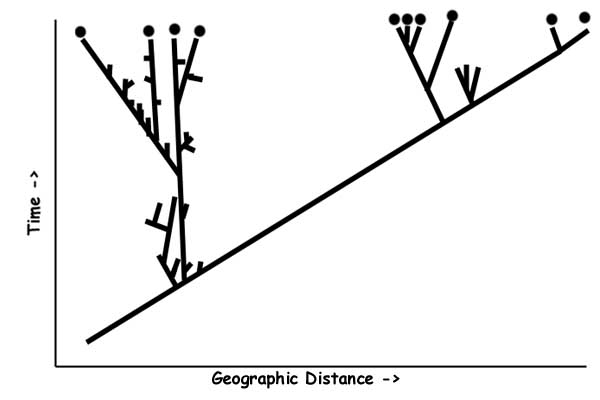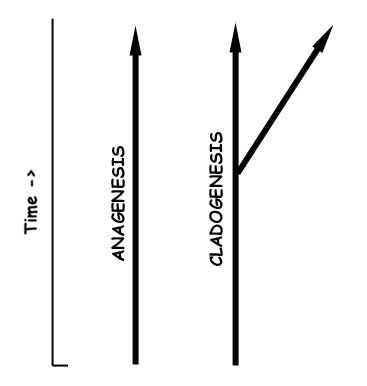A group of organisms that have begotten each other as ancestor
and descendant (either as individuals or as a group) along a continuum
of time are called a LINEAGE.
A lineage that is made up of an ancestor and ALL of its descendants
is called a CLADE.
Clados is latin for branch.
When a new branch forms in PHYLOGENY the process is called CLADOGENESIS
A PHYLOGENY is the actual history of cladogenesis in a clade.
A CLADOGRAM is a schematic representation of the phylogeny.

Evolution operates at many scales.

Lineages can change over time or they can split. Lineage splitting
is cladogenesis, simple change over time without splitting is called ANAGENESIS.
The two processes are intertwined and often confused with each other.
When you look atthe phylogeny of a group, you are almost certainly observing
both.

When Cladogenesis occurs at the appropriate scale, we call it SPECIATION.